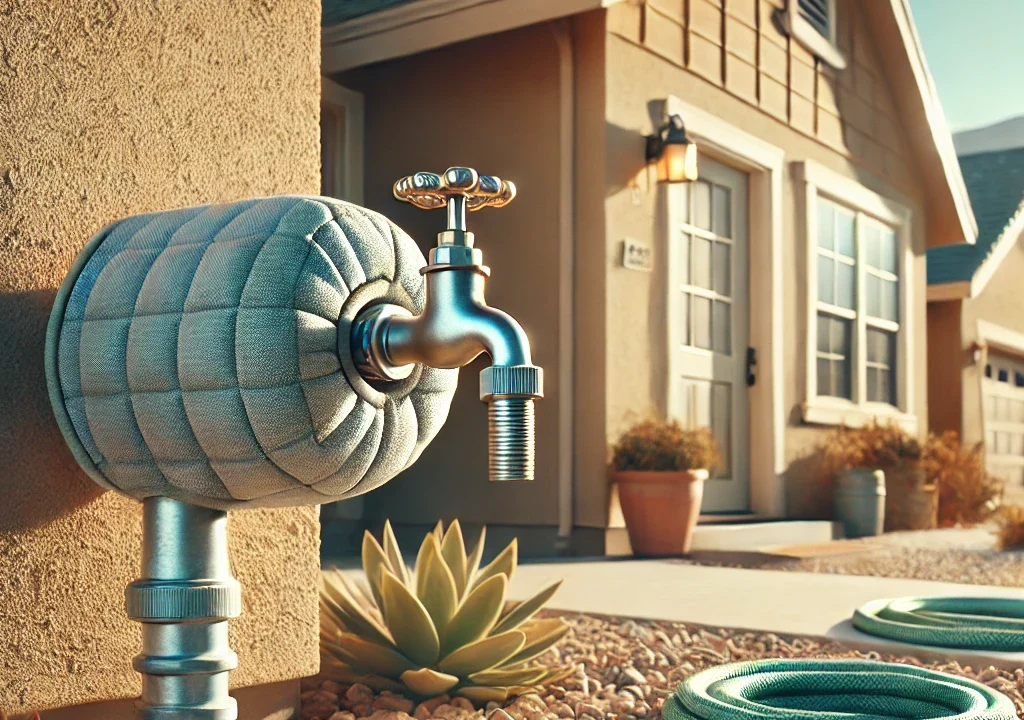
As winter approaches, it’s crucial to prepare outdoor plumbing for winter to prevent damage from freezing temperatures. Outdoor pipes, faucets, and water systems are vulnerable to freezing, which can lead to burst pipes and costly repairs. By taking some preventive steps, you’ll protect your outdoor plumbing and save yourself time and money.
In this guide, we’ll show you how to prepare outdoor plumbing for winter effectively, keeping your home safe and reducing the risk of costly repairs.
1. Drain and Disconnect Hoses
To start, disconnect all garden hoses from outdoor faucets. This step is essential when you prepare outdoor plumbing for winter. Water left in hoses can freeze, expand, and damage both the hose and faucet. Drain the hoses fully and store them indoors.
2. Shut Off Outdoor Water Supply
Locate the shut-off valve for your outdoor water supply, and turn it off. This step ensures no water remains in the pipes, where it could freeze. After shutting off the valve, open the outdoor faucet to release any remaining water.
3. Insulate Outdoor Faucets
Insulating outdoor faucets is an essential step to prepare outdoor plumbing for winter. Use foam faucet covers for protection. For added insulation, consider heat tape or insulated sleeves on exposed pipes to prevent freezing.
4. Winterize Your Sprinkler System
Winterizing your sprinkler system will protect it from freezing temperatures. Shut off the water supply, drain the lines manually, or use an air compressor. If you’re unsure, consult a professional to ensure proper winterization of your system.
5. Winterize Outdoor Water Features
For water features like fountains or ponds, drain them before the first freeze. Store pumps and filters indoors for added protection. For ponds that will stay filled, use a floating de-icer to prevent freezing and protect aquatic life.
6. Seal Gaps Around Pipes
Check for gaps around outdoor pipes and seal them with caulking or expanding foam. This step is crucial as you prepare outdoor plumbing for winter, reducing the chance of frozen, burst pipes and improving energy efficiency.
7. Protect Outdoor Appliances
If you have outdoor sinks or grills with connected plumbing, disconnect water lines and cover the appliances. Turning off the water supply to these appliances prevents residual water from freezing.
8. Winterize Pools and Hot Tubs
Drain the plumbing lines in pools and hot tubs to prevent freezing damage. Cover pools to avoid debris, and drain and clean hot tubs thoroughly before covering. This step ensures both are ready for use when warmer weather returns.
9. Monitor Outdoor Plumbing Throughout Winter
After you prepare outdoor plumbing for winter, monitor it throughout the season. Catching issues early can prevent minor problems from escalating into major repairs.
Why Preparing Outdoor Plumbing for Winter Matters
Taking the time to prepare outdoor plumbing for winter protects your home and prevents freeze-related damage. By following these steps, you’ll reduce energy costs and ensure your plumbing is ready for spring.
By implementing these steps, you can protect your outdoor plumbing, avoid costly repairs, and keep your home safe throughout the colder months.



